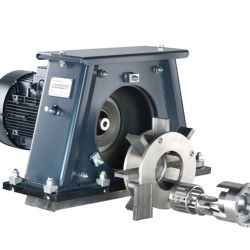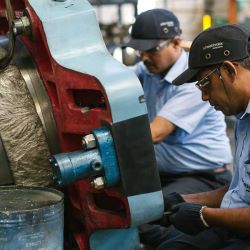Between spec and reality – do you really know how you’re peening?
In high-spec peening applications in aerospace and automotive, precision and repeatability of peening results are critical to part life and performance. This starts with getting the process right to consistently meet the specification. But how do you know if you’ve got it right? And what if the spec has been misinterpreted in the first place?
In the US, the old MIL spec S13165 used to provide the main frame of reference – a shot peening bible everyone was using. However, it allowed room for interpretation on the way test results are judged, adding to an already quite common confusion, even among seasoned shot peeners. In particular, it failed to properly explain intensity and coverage and how these two factors relate to the desired outcome.
The latest AMS 2430 standard has clarified the ambiguity, but there still are quite a few misconceptions in the field around how and what to test or measure – and how to interpret test results. In a worst case scenario, this could lead to parts that are not fit for purpose – without this being picked up in testing.
At Wheelabrator, we follow (and quite often lead) best practice in testing. Our test centres in Charleville, France, in LaGrange, Georgia, and in Metelen, Germany, specialise in the testing of peening processes for aerospace and automotive applications. This is where tensions between what customers ask for – in terms of benchmarks – and what they actually need usually come to a head.
A recent example may suffice to show how easy it is to get it wrong in testing: We were asked to provide a new gear peening process for a customer in automotive. The spec from the engineering team there was to achieve -1200MPa at 50µm and with an Almen value of – 9A, which they said they achieved at 6bar using a duplex peening process.
We ran our tests on the parts with different types of blast media and measured intensity, coverage and residual compressive stresses. The result: we were easily able to meet the required -1200MPa at 50µm with just 2bar. A final series of tests even showed that the desired result could be achieved with one type of media rather than with a duplex process.
But when we reported an Almen intensity of 16A for the recommended process, the customer thought we’d gone off-spec. Yet the initial target value of 9A provided by the customer was virtually meaningless for the application. It described an arc height for the Almen strip, which is not a suitable measure of intensity.
Furthermore, prescribing an Almen intensity for the process was counterproductive in any case. The residual compressive stress measure (-1200MPa) provided the meaningful indicator for the right peening result. Trying hard to meet the Almen value made the process inefficient without improving the result.
Fully understanding both process and requirement meant that the customer got the process they actually needed – and were able to operate their peening equipment with one type of abrasive and at 2bar, as opposed to 6bar, which is both cheaper and more stable.
It’s not always an easy conversation to have, when we’re challenging the very basis of what a customer is asking for (especially when we know it was specified by very experienced people), but we know it’s worth it.
There’s no shame in having got this wrong in the past, but it’s important – and so easy – to get it right in future.


